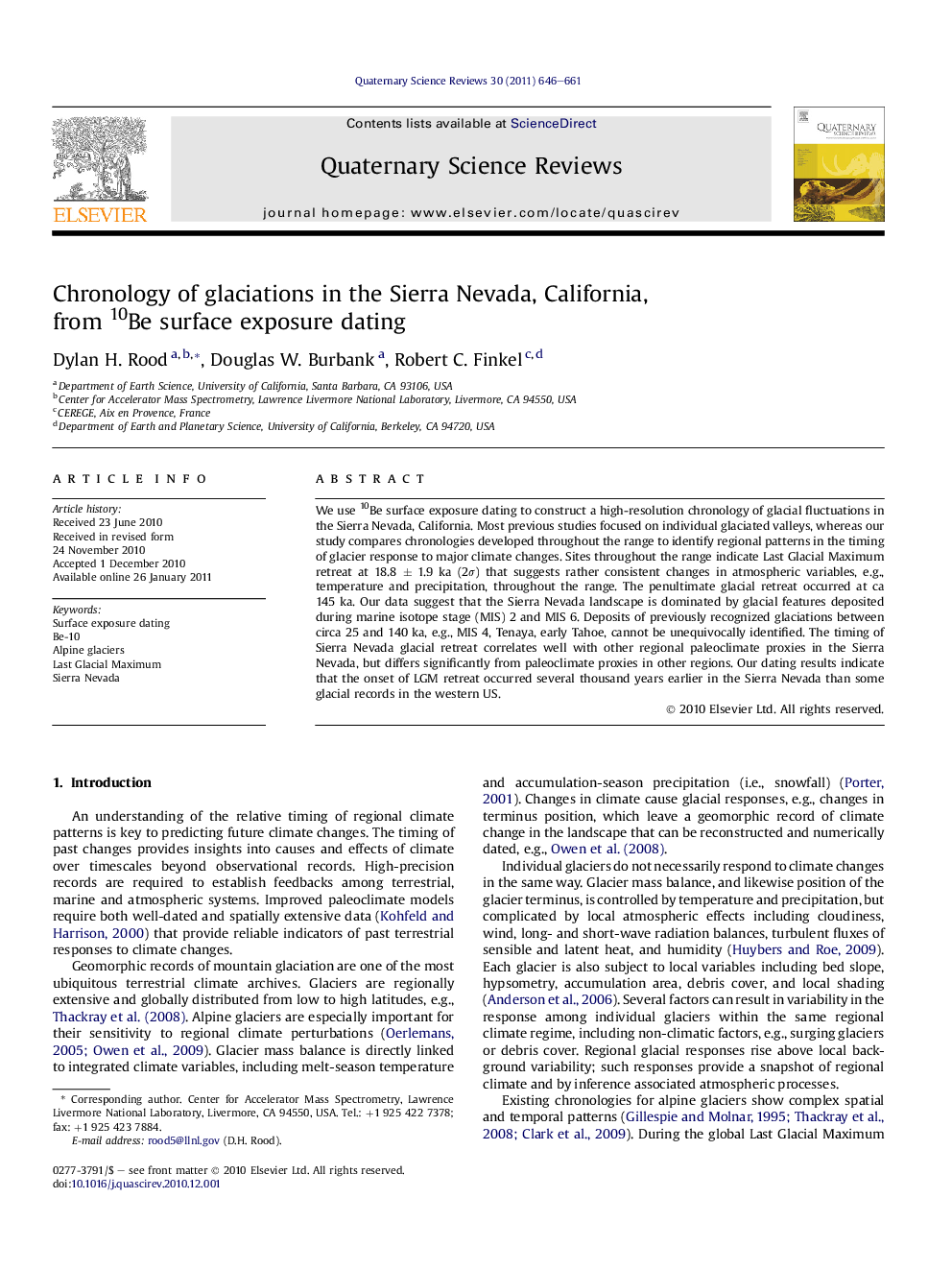| Article ID | Journal | Published Year | Pages | File Type |
|---|---|---|---|---|
| 4736975 | Quaternary Science Reviews | 2011 | 16 Pages |
We use 10Be surface exposure dating to construct a high-resolution chronology of glacial fluctuations in the Sierra Nevada, California. Most previous studies focused on individual glaciated valleys, whereas our study compares chronologies developed throughout the range to identify regional patterns in the timing of glacier response to major climate changes. Sites throughout the range indicate Last Glacial Maximum retreat at 18.8 ± 1.9 ka (2σ) that suggests rather consistent changes in atmospheric variables, e.g., temperature and precipitation, throughout the range. The penultimate glacial retreat occurred at ca 145 ka. Our data suggest that the Sierra Nevada landscape is dominated by glacial features deposited during marine isotope stage (MIS) 2 and MIS 6. Deposits of previously recognized glaciations between circa 25 and 140 ka, e.g., MIS 4, Tenaya, early Tahoe, cannot be unequivocally identified. The timing of Sierra Nevada glacial retreat correlates well with other regional paleoclimate proxies in the Sierra Nevada, but differs significantly from paleoclimate proxies in other regions. Our dating results indicate that the onset of LGM retreat occurred several thousand years earlier in the Sierra Nevada than some glacial records in the western US.
